Water-saving Greenway Street Garden: Austin Open Day Tour
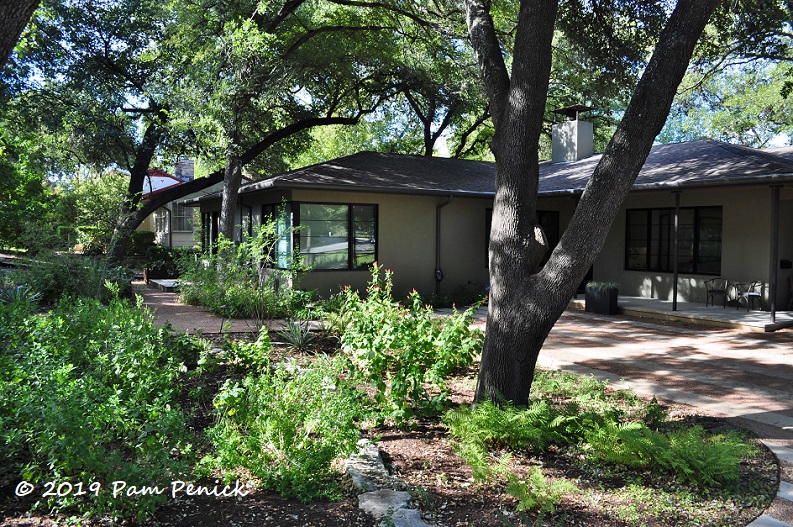
As Austin gardeners scramble today to get tender plants under cover ahead of an expected hard freeze (seems too early!), let’s continue with coverage of the recent Open Day tour sponsored by The Garden Conservancy. Green House on Greenway, the 2nd garden I visited, reminded me of my own garden’s conditions: lots of trees, lots of shade, and a sloping lot that sheds rainwater and can easily cause erosion.
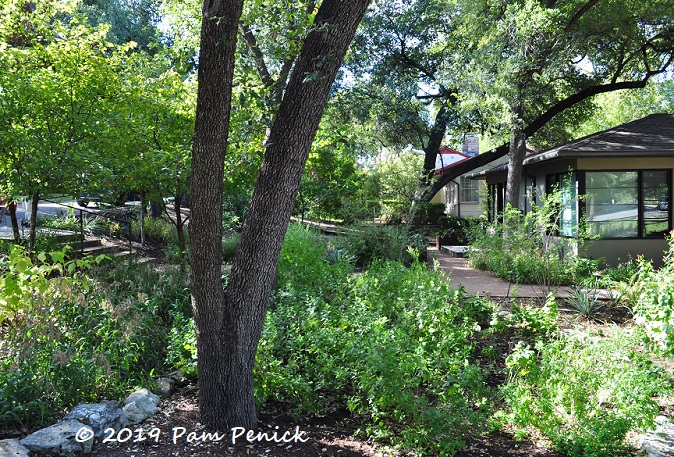
Luckily for the homeowners, their daughter is landscape architect Jennifer Orr of Studio Balcones. Reducing runoff and erosion in a sloping yard like this is challenging when you have mature trees because you can’t just regrade the whole lot without disturbing or covering their expansive roots. Jennifer added check dams — a line of rocks running across the slope — to slow runoff and give it time to soak into the soil. She also planted a lush understory of native and adapted grasses, perennials, shrubs, and ornamental trees to slow and soak up runoff.
A steel-and-gravel stair (middle left) invites visitors into the garden…
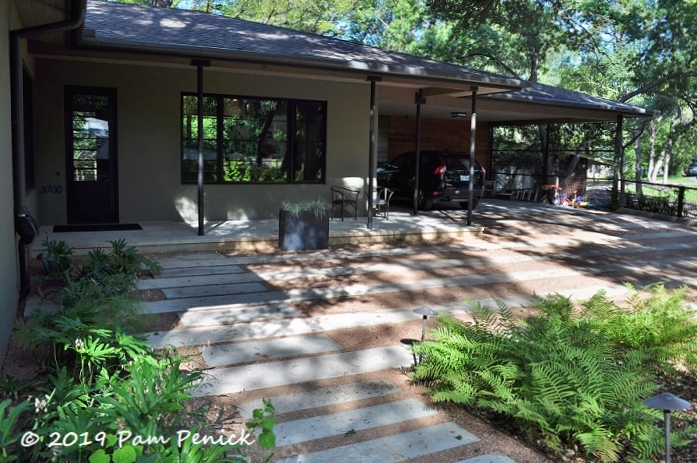
…and leads to an entry walk of concrete strips and gravel. Jennifer continued the concrete strips over to the carport’s driveway, creating an interesting pattern, welcome breathing room at the front of the house, and permeability for rainwater to soak into the soil.
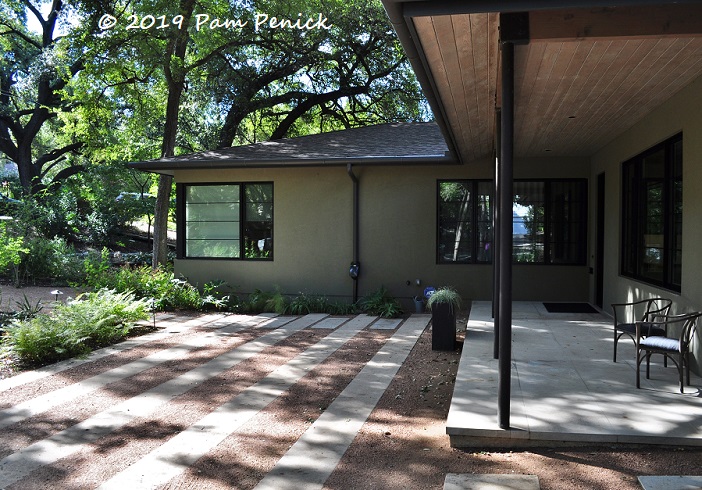
Here’s the side view from the carport. Extending permeable paving out from the house creates a courtyard feel and prevents the dreaded green-mustache planting bed along the foundation.
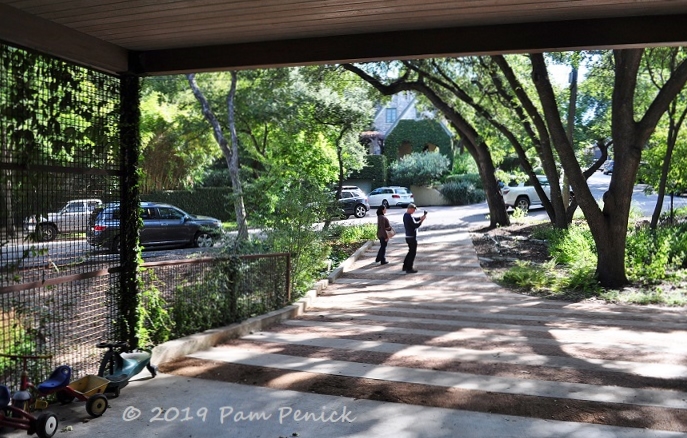
The carport enjoys a pleasant view through the trees, and steel mesh along one side gives vines a toehold for additional greenery and privacy.
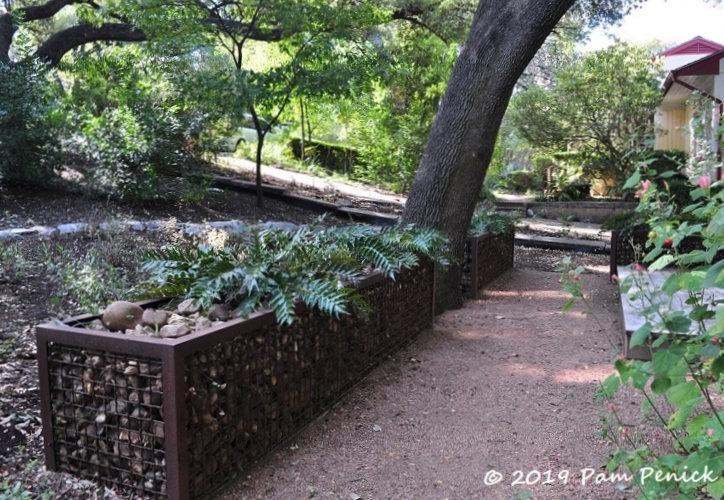
Gabions — wire boxes filled with rocks — are popular elements in garden design these days, but they started as soil stabilizers for engineering purposes. They still work as soil stabilizers (and check dams), even when made decorative, like these gabion planters filled with holly fern.
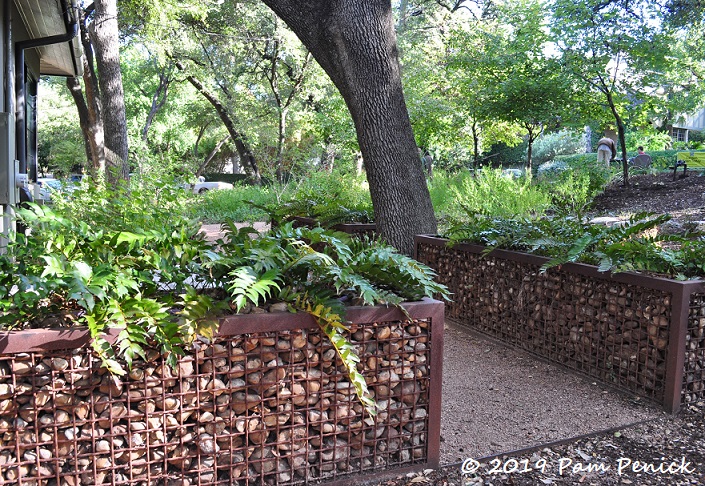
Three gabion planters create a small courtyard just off a side entrance.
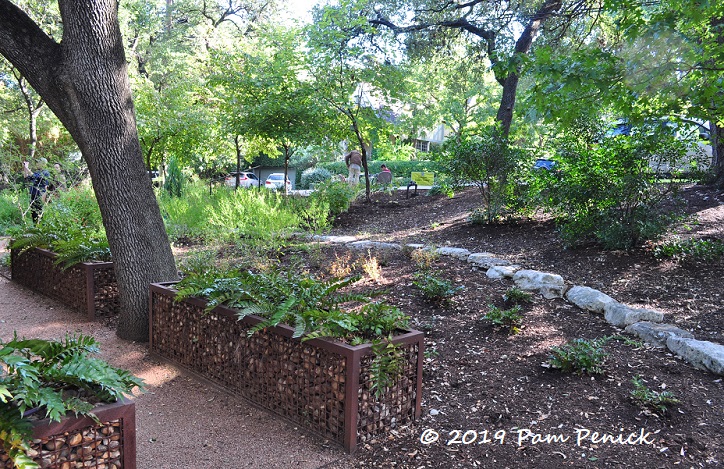
A wider view shows a check dam running along the slope behind the gabions.
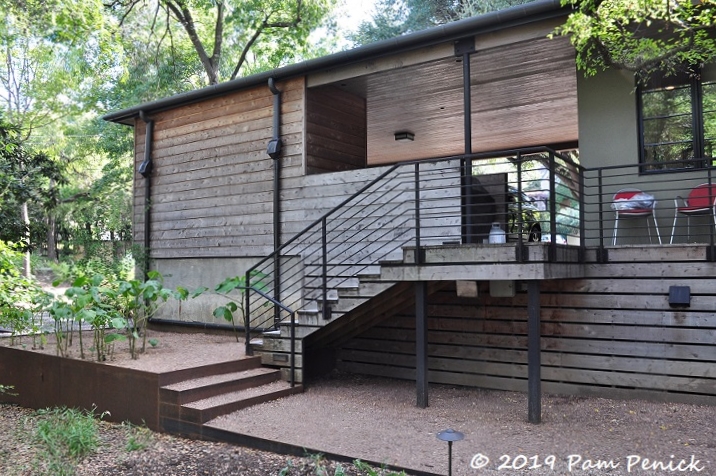
A rear stair from the carport leads to a gravel landing planted with, I think, root beer plant, aka hoja santa (Piper auritum). Under a wide deck, rainwater storage bladders hold water collected from gutters.
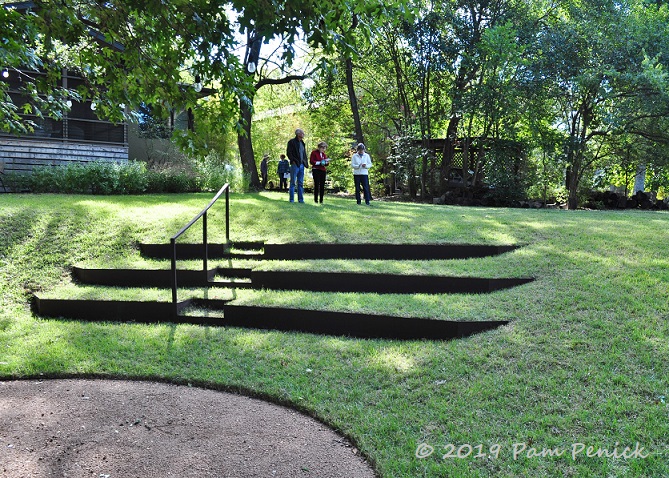
The backyard continues sloping downhill, toward Waller Creek, and a lawn gives grandkids a place to play. Jennifer created access and a sort of amphitheater by cutting steps edged with steel into the slope.
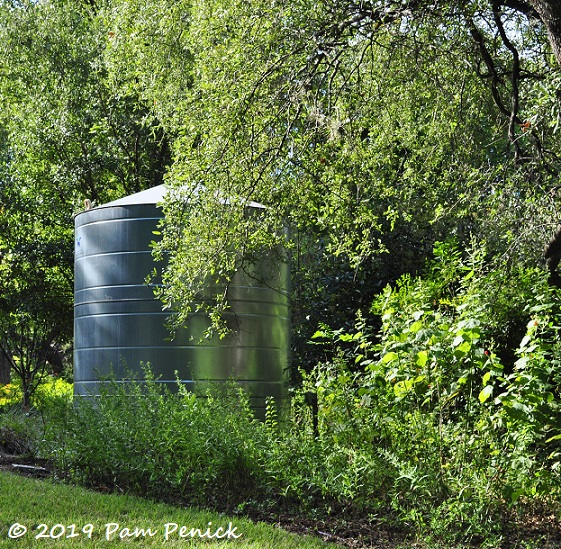
Another 5,000 gallons of rainwater can be stored in a cistern in the back garden.
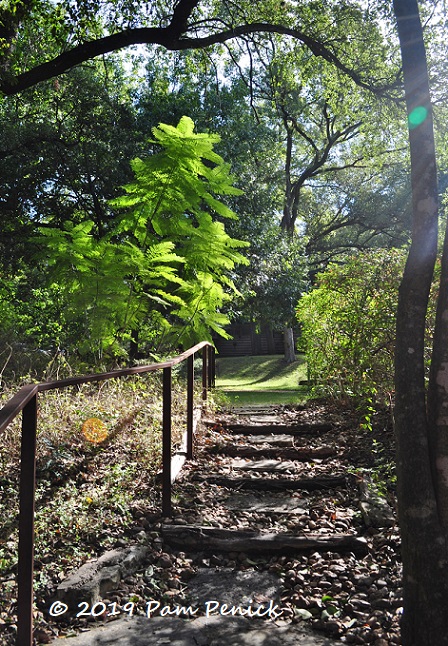
A rustic stair with a clean-lined steel railing leads to the lowest level of the property…
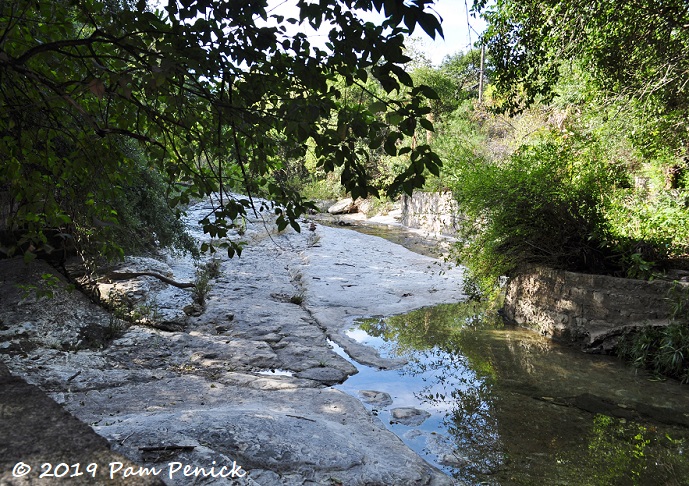
…overlooking the limestone bed of Waller Creek.
Up next: The Old Austin style of the Davern Oaks Garden. For a look back at the happily-ever-after Berger Street Garden, click here.
__________________________
Digging Deeper
Come learn about gardening and design at Garden Spark! I organize in-person talks by inspiring designers, landscape architects, authors, and gardeners a few times a year in Austin. These are limited-attendance events that sell out quickly, so join the Garden Spark email list to be notified in advance; simply click this link and ask to be added. Season 8 kicks off in fall 2024. Stay tuned for more info!
All material © 2025 by Pam Penick for Digging. Unauthorized reproduction prohibited.


I really envy the cistern. Texans seem to use a lot of them, while they’re hard to find anywhere in private gardens here in SoCal. I wish I could figure out where to put one – my 3 rain barrels empty all too quickly.
It does seem like almost every garden in Austin has a cistern or a rain barrel or two. I’m surprised Californians don’t do more of that. Like you, I haven’t found a place for a big cistern — or rather, it would entail guttering that my house doesn’t have. One day, I hope!
Hopefully the gabion checks the size of the holly fern a bit. Mine has turned into a super-Moby.
That’s big! 🙂
I am intrigued by the striped hardscape, so simple but very “pow”. Did your eagle eye notice if the gravel stayed put under foot or car traffic? Also wondering what happens when a hard rain hits the slopes…And, of course, THANKS for sharing this tour: like being there without the heinous drive to Austin! 🙂
My eagle eye did not, but CTG Linda’s eagle eye did, and her video about this garden shares that the gravel is held in place with a stabilizer. I wonder how much permeability that actually offers, but it still has to be better than solid concrete, plus it looks wonderful.
Gorgeous and oh, to live on Waller!